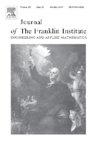具有模型不确定性的刚柔车辆耦合动力学分析及自适应控制
IF 4.2
3区 计算机科学
Q2 AUTOMATION & CONTROL SYSTEMS
Journal of The Franklin Institute-engineering and Applied Mathematics
Pub Date : 2025-06-13
DOI:10.1016/j.jfranklin.2025.107774
引用次数: 0
摘要
针对具有柔性结构和不确定动力学特性的刚体车辆,通过线性化动力学框架建模,提出了一种自适应滑模控制策略的设计与应用。利用有限元方法对平面刚柔系统的动力学进行了推导,得到了反映车辆结构刚柔耦合的线性矩阵-向量形式。该控制方法结合了标称补偿控制律和不确定补偿控制律。标称控制律采用带参考输入的线性二次型调节器,在无不确定性的情况下实现理想的状态跟踪。为了解决系统的不确定性,最初为单输入、单输出系统开发的ASMC定律被扩展到具有潜在不同输入和输出数量的大维度、多输入、多输出系统。ASMC框架考虑了系统的不确定性,而不需要不确定性边界的先验知识。控制器结合了全阶(当所有状态测量都可用时)和降阶(当某些状态测量不可用时)观测器来估计名义状态和实际状态。该算法依赖于一组有限的物理上有意义的参数,便于简单的调整和实现。仿真结果验证了ASMC策略的有效性,在模型不确定的情况下显示出鲁棒的稳定性、精确的跟踪和抖振抑制。参数分析进一步考察了ASMC参数对系统响应和控制性能的影响。与文献中的自适应非奇异快速终端滑模控制器相比,所提出的ASMC在表现出更好的振动抑制和更少的控制工作量的同时,实现了相当的状态收敛。本文章由计算机程序翻译,如有差异,请以英文原文为准。

Coupled dynamics analysis and adaptive control of rigid-flexible vehicles with model uncertainties
This paper presents the design and application of an adaptive sliding mode control (ASMC) strategy for a rigid-body vehicle with flexible structures and uncertain dynamics, modeled through a linearized dynamic framework. The dynamics of the planar rigid–flexible system are derived using the finite element method, resulting in a linear matrix–vector form that captures the rigid–flexible coupling within the vehicle’s structure. The control approach combines nominal and uncertainty compensation control laws. The nominal control law employs a linear quadratic regulator with a reference input to achieve desired state tracking in the absence of uncertainties. To address system uncertainties, an ASMC law originally developed for single-input, single-output systems is extended to large-dimensional, multi-input, multi-output systems with potentially differing numbers of inputs and outputs. The ASMC framework accounts for system uncertainties without requiring a priori knowledge of the uncertainty bounds. The controller incorporates both full-order (when all state measurements are available) and reduced-order (when some state measurements are unavailable) observers to estimate both nominal and actual states. The proposed algorithm relies on a limited set of physically meaningful parameters, facilitating straightforward adjustment and implementation. Simulation results validate the effectiveness of the ASMC strategy, demonstrating robust stabilization, accurate tracking, and chattering mitigation despite model uncertainties. A parametric analysis further examines the influence of the ASMC parameters on system response and control performance. Compared to an adaptive nonsingular fast terminal sliding mode controller in the literature, the proposed ASMC achieves comparable state convergence while exhibiting superior vibration suppression and reduced control effort.
求助全文
通过发布文献求助,成功后即可免费获取论文全文。
去求助
来源期刊
CiteScore
7.30
自引率
14.60%
发文量
586
审稿时长
6.9 months
期刊介绍:
The Journal of The Franklin Institute has an established reputation for publishing high-quality papers in the field of engineering and applied mathematics. Its current focus is on control systems, complex networks and dynamic systems, signal processing and communications and their applications. All submitted papers are peer-reviewed. The Journal will publish original research papers and research review papers of substance. Papers and special focus issues are judged upon possible lasting value, which has been and continues to be the strength of the Journal of The Franklin Institute.

 求助内容:
求助内容: 应助结果提醒方式:
应助结果提醒方式:


